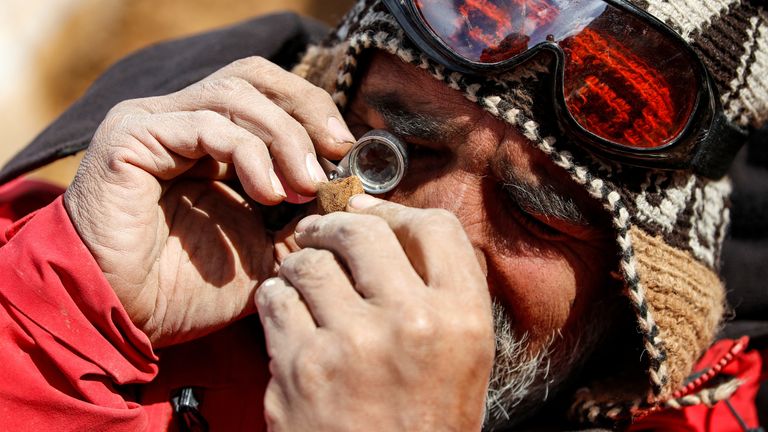
Credit: Science Advances (2023). DOI: 10.1126/sciadv.adg2456
Remains of a species of herbivorous dinosaur previously unknown in the southern hemisphere have been discovered in Chile, challenging long-held beliefs about the range of duck-billed dinosaurs, scientists said Friday.
Measuring up to four meters (13 feet) in length and weighing a ton, Gonkoken nanoi lived 72 million years ago in the extreme south of what is now Chilean Patagonia.
“These were slender-looking dinosaurs, which could easily adopt a bipedal and quadrupedal posture to reach the vegetation at height and at ground level,” said Alexander Vargas, director of the paleontological network of the University of Chile and one of the authors of the study published by the journal Science Advances and presented in Santiago.
The discovery demonstrated that Chilean Patagonia served as a refuge for very ancient species of hadrosaurs, a type of duck-billed dinosaur common in North America, Asia and Europe during the Cretaceous period, from 145 to 66 million years ago.

Their presence in the remote southern lands surprised scientists, who will have to “understand how their ancestors got there,” Vargas said.
Gonkoken nanoi, the fifth species of dinosaur discovered in Chile, was actually found in 2013, kicking off a decade-long investigation.
The name Gonkoken comes from the Tehuelche language, the first inhabitants of the region, and means “similar to a wild duck or a swan.”
Scientists have discovered the fossilised remains of a new species of duck-billed dinosaur that roamed Chile 72 million years ago.
Dubbed Gonkoken nanoi, the plant-eating creature weighed up to a tonne and could grow to 4m (13ft) in length, according to research published in Science Advances.

In 2013, an expedition led by the Chilean Antarctic Institute (INACH) uncovered fragments of yellowish bones at the bottom of a hillside close to the Torres del Paine national park in Patagonia.
Jhonathan Alarcon, the main author of the study, said: “At first, we thought it was from the same group as other South American hadrosaurs, but as the study progressed, we realised that it was something unprecedented.”
He said researchers had to delicately extract more than 100 pieces of bone, taking care not to damage others in the process.
Following this, palaeontologists had to make sure the remains belonged to the same species and check them with existing research to verify that it was a new kind of dinosaur.
Another study author, Alexander Vargas, said: “[The] Gonkoken nanoi is not an advanced duck-billed dinosaur, but rather an older transitional duck-billed lineage – an evolutionary link to advanced forms.”

The discovery demonstrated that Chilean Patagonia served as a refuge for very ancient species of hadrosaurs, a type of duck-billed dinosaur common in North America, Asia and Europe during the Cretaceous period, from 145 to 66 million years ago.

The extensive research allowed scientists to digitally reconstruct the skeleton – and they’re now planning to create a 3D print so it can go on public display.
Gonkoken is a combination of two words from the language of the indigenous Aonikenk people, who inhabited Patagonia until the end of the 19th century.
“Gon” means similar or similar to and “koken” means wild duck or swan.
“Nanoi” is in recognition of Mario ‘nano’ Ulloa, a former rancher who provided the team with support during the first discoveries.